
- Homepage
- Material
- Bone China (7)
- Brass (6)
- Brass, Porcelain (3)
- Bronze (2)
- Ceramic (18)
- Ceramic & Porcelain (34)
- Ceramic / Porcelain (25)
- Ceramic / Pottery (4)
- Ceramic, Porcelain (40)
- China / Porcelain (16)
- Glass (3)
- Metal (8)
- Ormolu (2)
- Porcelain (1149)
- Porcelain / China (125)
- Porcelain, Cut Steel (3)
- Porzellan (4)
- ... (3406)
- Metal
- Metal Purity
- Pendant Shape
- Style
- Type
Vung Tau Cargo Vietnamese Shipwreck Baluster Vase and Cover c1690

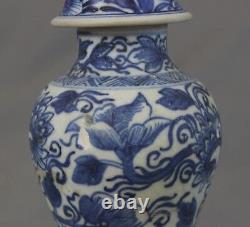
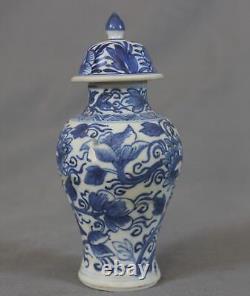
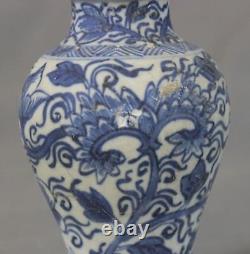
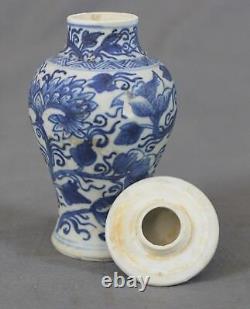
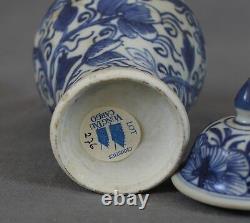
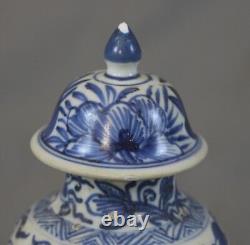
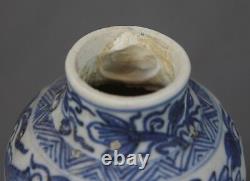


Vung Tau Chinese Shipwreck Cargo Baluster Vase and Cover c1690. This nice piece is painted with exotic Feathery Chrysanthemum stems. The added interest of a seashell attached to the inside of the neck. Height: 15.5cm Please Note.
The coral is for display purposes only and does not come with this item Condition: Two small surface chips to the body, hairline to the body, areas of marine residue. The lid with a chip to the blue knop Provenance. As these pieces have spent hundreds of years submerged beneath the sea, an overall dulling of the glaze is quite common and more prominent in some examples. The Vung Tau Cargo Chinese Export Porcelain Christies Amsterdam Tuesday 7. April 1992 & Wednesday 8.
Pyramids of porcelain: a veritable mountain of bright China ware. There was no question that in the later 17.
Century, Europeans were fascinated by the newly abundant ceramic wares of China and Japan. For the first time in history, these boldly painted blue and white, overglaze coloured, porcelain vessels from the Far East were imported to Europe in sufficient quantities to play a crucial role in the development of taste and interior decoration, in many of Europe's most cosmopolitan capitals. Century, the fashionable character and exotic variety of a'Palace of Porcelain'. The Shipwreck In 1989, A Vietnamese fisherman, trawling the sea bed for the locally plentiful supplies of shellfish, snagged his nets on an obstruction.
He was a few miles away from Con Dao Island, which lies approximately 100 nautical miles away south of Vung Tau on the southern coast of the Socialist Republic of Vietnam. The fisherman's chance discovery gradually came to public attention. Under the authority of the Vietnam Government, the Vietnam Salvage Corporation, headed by Mr Le Minh Cong, its General Director, a state owned company of the Ministry of Transport and Communications, undertakes all salvage and sea bed investigations within the territorial waters of Vietnam as a monopoly on behalf of the Government.
It was decided to raise the Cargo as a commercial operation, with the sale of a proportion of the cargo helping to finance the installation of other parts of it in appropriate Vietnamese museums. Seeking a joint venture partner to share the costs of the recovery, the Corporation (VISAL) joined forced with a Singapore based Swedish diving expert, Sverker Hallstrom, whose Company had extensive experience of surveying and operating remote controlled diving vehicles at unusually great depths. In fact, this was not essential for the Vung Tau Cargo; it lay only at some 120 feet. But visibility was poor, the diving seasons were interrupted by seasonal monsoons, and eventually it required three seasons of diving to complete a systematic recovery of the cargo, recorded by site grid drawings of the hull, and underwater film.
Examination of the timbers showed clearly that the vessel had been burned to the waterline; a part of the cargo had rolled off the damaged deck, and lay encrusted and broken around the irregular remains on the sea bed. What was the rationale for the trading route of this nameless wreck? The sea route south from Con Dao Island was one of the best established in Asia, part of the enormous and intricate network of maritime trade routes which had linked South Asia for millennia, bringing trade goods from China at an early date as far West as the Red Sea and the Persian Gulf. At this date, the Vung Tau Cargo was probably intended for the major trading centre in Java, the city of Batavia (now Jakarta). Settled by the Dutch in 1619, it had prospered greatly while the British trading port at Bantam, 10 miles west up the coast, yielded influence to the excellent natural harbour.
It was the greatest Dutch colonial fortified city in Asia for centuries. As the Asian administrative centre of the enormous Dutch East India Company (VOC), it enjoyed great political and economical independence, and drew substantial revenues from the sprawling local market outside the walls which attracted buyers and sellers from all over South East Asia. There are strong grounds for supposing that much of the present cargo would have ended up here, ready to be bought by the Dutch VOC supercargoes (business managers) preparing a mixed consignment for the homeward run to Amsterdam or elsewhere along the Netherlandish seaboard. The best evidence lies in a study of the cargo itself, for the Chinese porcelain that comprises it is a very remarkable consignment indeed. The Porcelain The provincial coastal kilns of China, and the more sophisticated inland ones at Jingdezhen in South Central China, had been producing'export market' ceramics for well over a thousand years before our junk loaded its ill fated consignment.
Arab Dhows from the Near East, ocean going Chinese junks capable of travelling to India, and'Country' boats commuting under western license from India to China had all helped transport Chinese porcelain across remarkable distances. Dating as it does from very close to AD1690, the porcelain is exceptionally interesting for two reasons. Firstly, it was made within a decade of AD1683, the year ceramic historians regard as the official date of the re opening of China's major porcelain kilns, at Jingdezhen. Civil war had disrupted industry since the 1630's, as northern Manchu invaders systematically drove the native Ming Dynasty court southwards and into exile. The records show that Jingdezhen suffered badly from the economic and political dislocation; while Fujian Province, where blanc de chine was made, was a last centre of resistance to the victorious Manchus, and suffered accordingly.
Although the Manchus dated their new hegemony from AD1644, the disruption caused both to ceramic production, and to the export trade, is traditionally believed to have lasted several more decades. By 1690, the industry had recovered. The present cargo shows dramatically, and in a way never before noted so clearly by ceramic historians, that western demand apparently played a direct and influential role in this recovery.
It was not just in restimulating the industry, but even more so by supplying specific models for Chinese potters to reproduce in porcelain. This is the really remarkable characteristic of the export porcelain in the Vung Tau Cargo. The consignments heading for Batavia were in many cases forms of objects which had no precedent in China or Asian ceramics but were consciously copying Western metal or glass shapes and designs, to cater presumably for the burgeoning long distance trade to Europe based around the entrepot market at Batavia.The printed records of the Dutch VOC gives some clues as to what happened. There are still records of models made of wood, and in other materials, being sent to show Chinese and Japanese artisans what vessels should look like. Indeed, even in European porcelain rooms of the period, there are records that such painted wooden vessels copying porcelain wares were entirely acceptable substitutes when lost in an extensive baroque display; certainly, in Germany.
These'Design models' would have been delivered from Holland, throughout Batavia or Canton, to Chinese merchants controlling the complicated ceramics trade with Jingdezhen. During the warm dry potting season, when the clay was malleable, the models would have been delivered, moulds made, the commissions prepared, and the peculiar, finished products finally return to the Asian port of origin - perhaps a year later. Among the vessels in the cargo showing clear western inspiration, the standing pieces with multi knopped stems are perhaps most obviously influenced by the 17. Century preference for'turned' decoration; barley twist legs on furniture, rows of horizontal flanges up the stems of glasses and candlesticks, tiered finials on silver cups. Goblets and covers, wine cups, flat topped tazze, small vases with elaborate lower parts, deep cups with shallow covers; these are remarkable shapes, irresistibly western inspiration. Very many of the small vases are potted with spiral panels in shallow relief. This too, is most unusual in Chinese ceramics, but can easily be found in European decoration, because by that time there was no established Eastern tradition this somewhat disturbing design element, which imparts movement and a certain apparent asymmetry to perfectly standard little storage vases and beakers. The painted deisigns too, reflect a blend of traditional Eastern patterns, and some remarkable Western innovations. The cargo contains an exceptional range of fairly simple floral patterns drawn with cross hatching filling in the main fields, quite unlikely anything Chinese, but entirely Similar to western prints with cross hatched backgrounds. A group of shallow covers and cups have an extraordinary design; a seated western monarch and queen, clearly holding an orb and sceptre, and known only from about ten examples where the pattern is accompanied by a virtuous French proverb. And, above all, a series of large vases, some baluster shaped with covers, some of flaring form - are uniquely painted with panels of tall, gabled, tightly clustered non Chinese houses that have an uncanny resemblance to Dutch canal houses of the period. Since the design is combine with an entirely baroque cartouche of pendent swags of flowers, it seems very likely that here too we see a very early appearance on Chinese export porcelain of precisely copied Dutch prints. Secondly, the academic interest of the porcelain itself is only one side of the fascination this cargo holds for historians. Equally revealing is the other side of the same coin; the effect this type of porcelain had, when it arrived in Europe. This was not porcelain for everyday use; dinner services, soup plates, cups and saucers, porcelain to be used in architectural assemblages; standing vessels which could be built into room ornamentation or used to dress an imposing piece of furniture. Reform, stock market, frenzies, maritime expansion, massively profitable new industrial activity; all were burgeoning enterprises in cosmopolitan countries recently released from crippling land and sea wares, and free to flex their muscles economically, politically, socially and culturally. Century welter of cultural exploration, full of sudden fancies and fashions, of tea drinking and tulipmania, came an opportunity to transform export of China into the very pineapple of politeness.Like an exotic hothouse bloom introduced to a somewhat stolid drawing room, the architectural use of imported Chines and Japanese porcelain revolutionised taste and interior decoration in many of the greatest European houses from Lisbon to St Petersburg it was, as the English writer Daniel Defoe described it somewhat critically, the new English Queen Mary II who'brought in the Custom of humour, as I may call it, of furnishing houses with China ware which increased to a strange degree afterwards, piling China upon the tops of cabinets, scrutores (writing stands), and every chimney piece, to the tops of the ceilings, and even setting up shelves for their China ware, where they wanted (lacked) such places'. Century, precious objects and even some porcelain had been displayed, in symmetrical wall arrangements on individual small brackets. This tradition was continued, but now it was the massed effect which mattered. Those who disliked the novel fad, even those who enjoyed the contrasts it created, called the phenomenon'China Mania.

